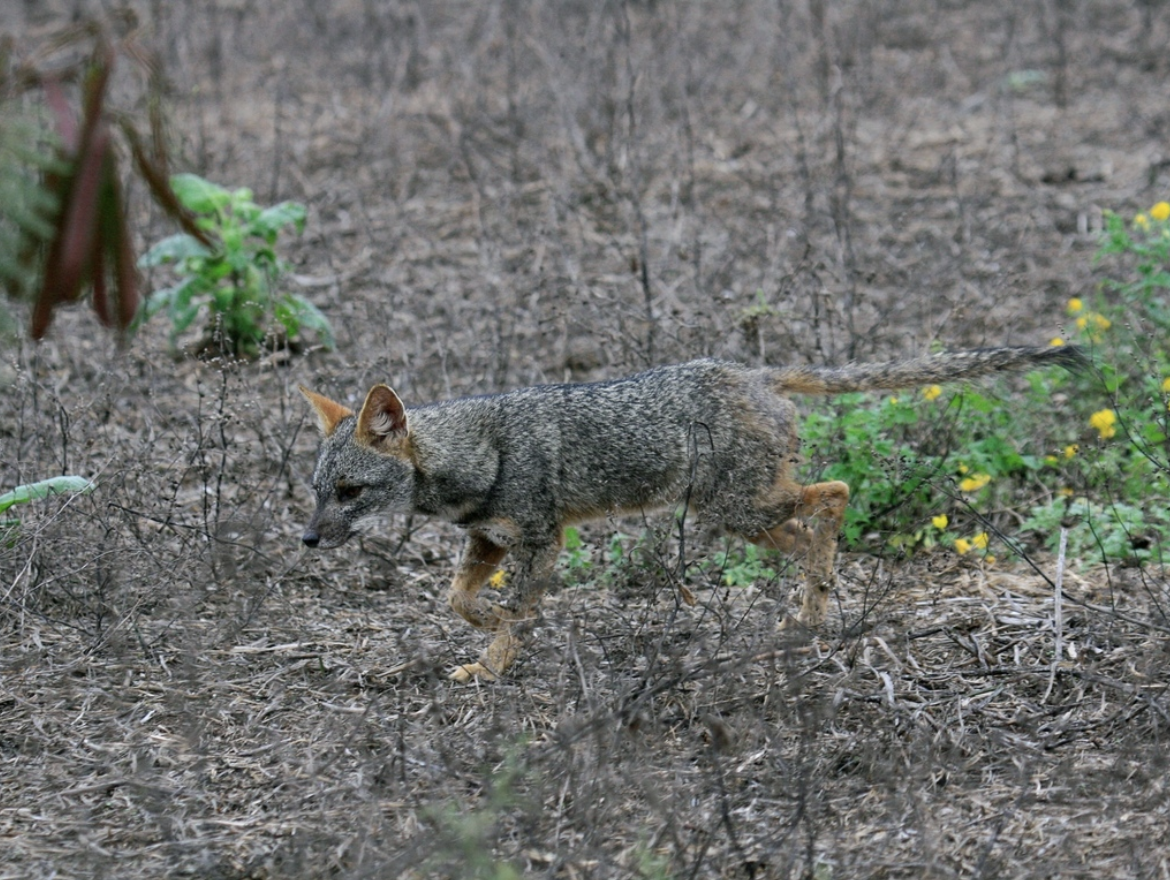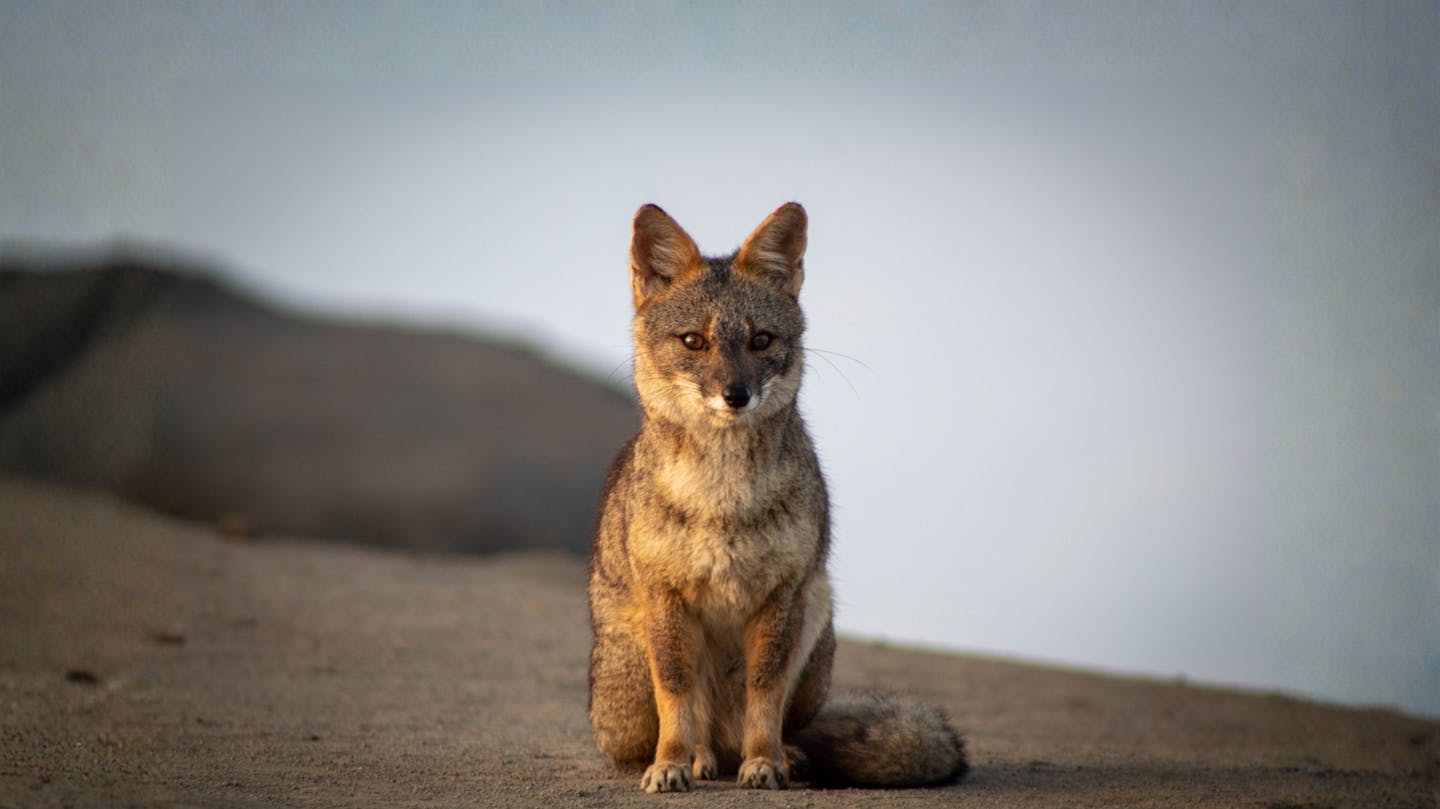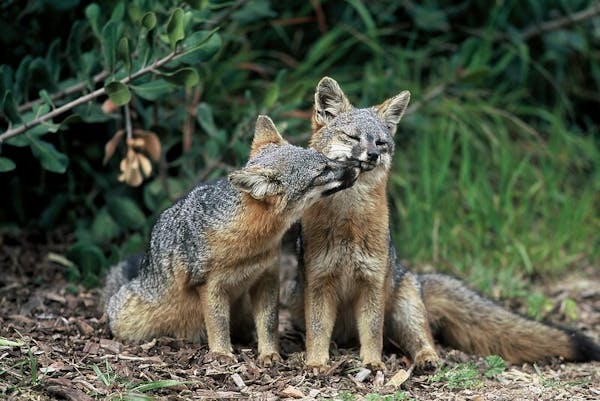Secrets of the Sechuran fox: A desert survivor of South America
- Nature Conservation
- Land Conservation
- Iconic Species
- Mammals
- Wildlife
- Andes Mountains & Pacific Coast
- Southern America Realm
One Earth’s “Species of the Week” series highlights an iconic species that represents the unique biogeography of each of the 185 bioregions of the Earth.
Along the narrow coastal plain of northwestern South America, the Sechura Desert stretches across the borderlands of Peru and Ecuador. It is a region of dry savannas, rocky cliffs, and sandy beaches, lying in the rain shadow of the Andes Mountains. Water is scarce, temperatures swing from scorching days to cool nights, and vegetation grows in stubborn patches of shrubs and thorny trees. Within this harsh environment lives one of the continent’s most adaptable carnivores, the Sechuran fox (Lycalopex sechurae).
Sometimes called the Peruvian desert fox or the Sechuran zorro, this species is found nowhere else on Earth. The word zorro means “fox” in Spanish, and locals use it to refer to several small South American canids that look like true foxes but belong to a different evolutionary branch.

In the One Earth Bioregions Framework, the Sechuran fox is the iconic species of the South American Coastal Deserts bioregion (NT8), located in the Andes & Pacific Coast subrealm of Southern America.
The false fox of South America
Although it resembles a fox in shape and behavior, the Sechuran fox is not a true fox. It belongs to a group of South American canids often called “false foxes,” or zorros, within the genus Lycalopex. True foxes, such as the red fox of North America and Europe, belong to the genus Vulpes. The Sechuran fox’s scientific name reflects its mixed heritage: Lycalopex combines the Greek words lycos meaning wolf and alopex meaning fox.
This distinction traces back to its ancestry. The Sechuran fox descended from early canids that migrated into South America during the Great American Biotic Interchange around four million years ago. These ancestors gave rise to ten species of canids that evolved across the continent. The Sechuran fox, though fox-like in form, is more closely related to wolves and dogs than to true foxes.
Small and perfectly suited to desert life
The Sechuran fox is among the smallest of all South American canids, weighing only 2.6 to 4.2 kilograms (5.7 to 9.3 pounds). Its body length ranges from 50 to 78 centimeters (20 to 31 inches), with a tail measuring up to 34 centimeters (13 inches).
The coat is gray agouti, blending seamlessly with the desert’s muted colors, and fades to white or cream along the underbelly. A dark gray muzzle, reddish-brown markings around the eyes and ears, and a black-tipped tail complete its subtle camouflage.
Its teeth are small compared to those of other fox-like species, an adaptation to its diet of dry plants, insects, and small animals. These features, along with sharp hearing and keen night vision, allow the Sechuran fox to survive where few mammals can.

Blending seamlessly into the muted sands and scrub of the Sechura Desert, the Sechuran fox’s gray and cream coat acts as natural camouflage. Image Credit: © Upupamartin, iNaturalist.
Diet of an opportunist
In a land where food and water are seasonal, the Sechuran fox eats what the desert provides. It is an opportunistic feeder that consumes insects, small rodents, bird eggs, berries, seed pods, and carrion. The fox favors the pods of desert shrubs such as Prosopis juliflora and fruits of Cordia and caper bushes, especially when animal prey is scarce. Remarkably, it can live for long periods without drinking, obtaining moisture entirely from its food.
Because it eats and disperses a wide variety of seeds, the Sechuran fox plays a crucial ecological role. Its feeding habits help maintain plant diversity in the arid ecosystem, much like bats and deer that scatter seeds across other habitats.
Nocturnal life and solitary habits
The Sechuran fox is a creature of the night. It spends daylight hours resting in burrows dug into sandy ground or rocky outcrops, emerging after dusk to forage. It usually lives alone, though pairs or small family groups are sometimes observed.
Little is known about its reproduction, but observations suggest that pups are born in October and November, likely coinciding with the brief period when food becomes more plentiful. Like other canids, it is intelligent and alert, known to evade predators by doubling back on its own tracks.

Closeup of a Sechuran fox at Chaparri Nature Reserve, Peru. Image Credit: © Joan Egert, Dreamstime.
Place in culture and local beliefs
In rural parts of Peru and Ecuador, the Sechuran fox occupies a complex place in human life. Farmers sometimes see it as a nuisance for preying on chickens or small livestock, while others associate it with folk medicine and traditional rituals.
Parts of the animal are used in local handicrafts and symbolic practices, reflecting an enduring relationship between people and the wildlife of the desert. Though often misunderstood, the fox has long been a quiet emblem of desert endurance and adaptability.
Threats to survival
The Sechuran fox faces growing pressure from human expansion. Habitat loss through deforestation and agricultural conversion continues to shrink its range, especially in Ecuador. Hunting remains another threat, as the fox is sometimes killed to protect livestock or for its body parts.
While exact numbers are uncertain, studies suggest there may be only about 5,000 individuals remaining. The species’ restricted range and small population size make it particularly susceptible to further decline.

Once common along Peru’s dry coast, the Sechuran fox now faces habitat loss and hunting, making conservation vital to protect this resilient desert species. Image Credit: © Ronald Bravo, iNaturalist.
Conservation efforts and outlook
The International Union for Conservation of Nature classifies the Sechuran fox as Near Threatened. In Peru, hunting is prohibited without a license, and some regions offer limited protection through national legislation. Continued habitat preservation along the western slopes of the Andes and within the Sechura Desert will be essential to maintaining the species’ future.
Despite the challenges it faces, the Sechuran fox remains one of South America’s most remarkable survivors. Its quiet resilience in one of the world’s driest landscapes serves as a reminder of nature’s ability to adapt, endure, and evolve.


.jpg?auto=compress%2Cformat&h=600&w=600)

